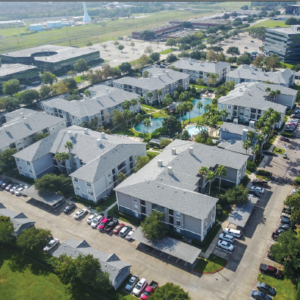As investment structures have become more sophisticated, more and more terms are being thrown around to describe the way in which cash flows are distributed to the parties involved. As such, it is becoming increasingly difficult to discern the investment structure being articulated for a given transaction.
Structure
One of the biggest disconnects involves distinguishing between a ‘preferred return’ (the specified return that an investment must achieve before incentives are paid), and ‘preferred equity’ (the ‘PE’), an equity position in a joint venture that receives distributions, which are senior in some respects to the distributions received by the investor. For discussion, ‘joint venture’ (the ‘JV’) is loosely defined here to represent an arrangement between two partners/investors. In both a typical JV and a JV with preferred equity investor, a Preferred Return exists. The big difference is how the Preferred Return is structured in the ownership entity.
As an example, here is a typical JV structure:
|
LP |
GP |
Though JV structures can be more complicated, the mechanics work roughly the same regardless of the number of entities in the upper tiers of the ownership. In this structure’s simplest form, there is typically a portion of the equity that is treated as a limited partner (the ‘LP’) with the remaining portion treated as a general/controlling partner (the ‘GP’). The LP can be a single entity or multiple entities, and for that matter, the GP can also be a single entity or multiple entities. Once this dynamic is established, the ways in which cash flows are carved up is almost endless and defines how both parties will be compensated based on the profitability of the deal.
One common aspect in the JV structure is the utilization of a Preferred Return, which is not the same as ‘preferred equity’. Both terms get tossed around as if interchangeable, but in actuality, the structures are quite different. This article attempts to articulate the difference between the two concepts as well as discuss the effects those concepts have on the cash flows flowing into the JV (in industry jargon, the cash flow structure is generally referred to as the ‘waterfall’).
Preferred Return
In the above case, if the LP invests 90% of the equity and the GP invests 10% of the equity, then the cash flows during the investment term are split 90/10 respectively, a ‘pro rata’ split. As a variant to this, a common practice in the JV is to structure the investment so that the GP receives a favorably disproportionate split of cash flow once the deal achieves a certain minimum return, the Preferred Return. This shift in the waterfall is generally considered an incentive for the GP for producing a profitable investment above the Preferred Return.
As an example, the JV waterfall might distribute cash flow as follows:
- Distribute 90% / 10% of cash flow to LP / GP up to a 9% Preferred Return
- Distribute 90% / 10% of cash flow to LP / GP until invested capital is returned
- Distribute 70% / 30% of cash flow to LP / GP for the remaining cash flow
Of course, there are nuances to this. Consider how the 9% could be calculated. Depending on the way the investment is structured, 9% could be calculated as:
- Simple Interest – 9% is due per annum but not compounded on the investment
- Compounded interest – 9% is compounded either annually/quarterly/monthly on the investment
- IRR – the combination of the Preferred Return and the return of the investment is calculated on an internalized rate of return
To add a twist to structuring the waterfall, there is also another term that pops up occasionally and is incorrectly used quite often. There are times when A ‘hurdle’ or ‘promote’ is interchanged with the Preferred Return, though the concepts are quite different. In the case of a promote, the GP typically gets a special distribution that is a profits incentive, typically distributed after the Preferred Return is met. In some cases, it can be as much as 20% of the total Preferred Return distributed to the LP and GP.
Using the previous example, here is what that waterfall might look like:
- Distribute 90% / 10% of cash flow to LP / GP up to a 9% Preferred Return
- Distribute 90% / 10% of cash flow to LP / GP until invested capital is returned
- Distribute 100% of cash flow to the GP until the GP receives 20% of the total Preferred Return (promote)
- Distribute 70% / 30% of cash flow to LP / GP for the remaining cash flow
It should be evident that this additional structure is very beneficial to the GP when compared to a straight Preferred Return.
Preferred Equity
If the Preferred Return is defined by a pari passu split between the LP / GP in a JV, then preferred equity can best be described as a senior/subordinate cash flow split between the JV and the PE investor.
To extend on the example provided earlier, here is a typical structure for a JV that includes a PE investor:
|
LP |
GP |
| PE Investor | |
The key element of this structure is the formation of an equity position in the capital stack that is senior in terms of return of capital to the JV. Like the JV example above, PE can be structured in many ways, but a typical structure in today’s market involves the following elements:
- Preferred Return – Similar to the JV structure, the PE requires a Preferred Return for its investment.
- Cash Flow Distribution – During the investment term, the PE typically receives a portion of the cash flow that is generated from the investment. In most cases, this distribution is made prior to the JV receiving its cash flow distribution. This is normally defined as a percentage of the PE’s investment amount.
- Exit Distribution – The defining characteristic of the PE investment is that the PE investment and its Preferred Return is distributed at the end of the deal prior to the JV’s Preferred Return and investment being distributed.
One of the major reasons for the mix of terminology between PE and Preferred Return is the fact that both the JV and the PE have a Preferred Return embedded in the investment structure.
To better illustrate how all the positions function together, here is a very basic example of how the structure would work for all three parties:
- Distribute cash flow to PE up to an 8% cash flow Distribution
- At exit, distribute 100% of cash flow to the PE up to the PE Preferred Return
- At exit, distribute 100% of cash flow to the PE until PE invested capital is returned
- Distribute 90% / 10% of cash flow to LP / GP up to a 9% Preferred Return
- Distribute 90% / 10% of cash flow to LP / GP until invested capital is returned
- Distribute 70% / 30% of cash flow to LP / GP for the remaining cash flow
Note that in the 2nd and 3rd steps, there is a qualifier in the waterfall, which identifies a distribution only at exit. During the investment term, once the PE receives its cash flow Distribution, the remaining cash flow skips the 2nd and 3rd steps until exit, which allows the JV to receive distributions just like it did in the previous scenario. The only other significant difference is at exit, when the PE is made whole prior to the JV receiving its distributions as illustrated in its position in the 2nd and 3rd steps.
In Summary
Why does all of this matter?
Investor
As parties throw around deal terms, it is important to recognize that some of these terms are potentially being misrepresented and/or misinterpreted. That said, the only way to confirm whether or not a deal uses the structures described above is assessing the JV waterfall language in the operating documents in order to be clear on the intent.
Senior Lender
Aside from its impact to the investor, senior lenders also care about the waterfall structure, particularly when it comes to PE, which can have characteristics that define how the senior lender interprets the JV as a whole and may impact underwriting.




